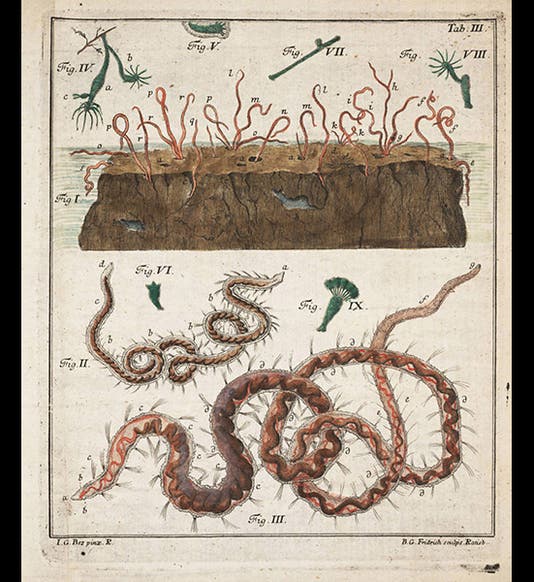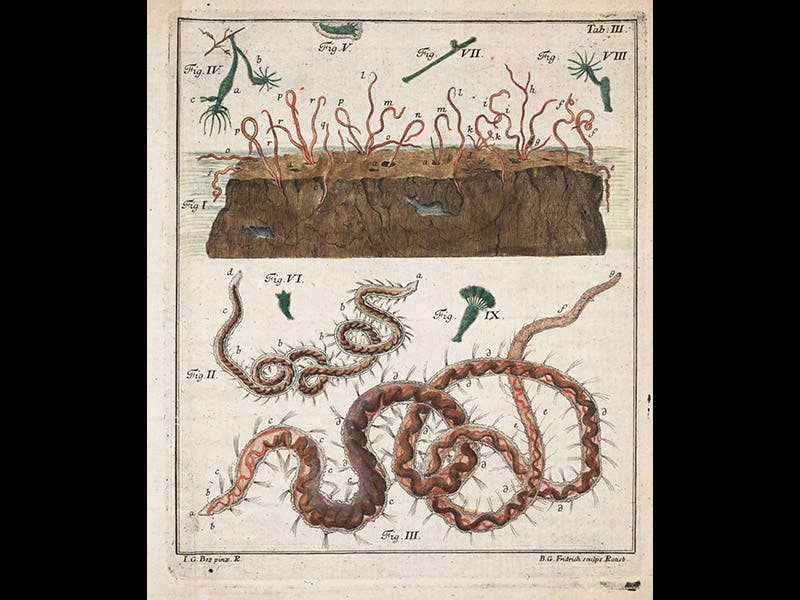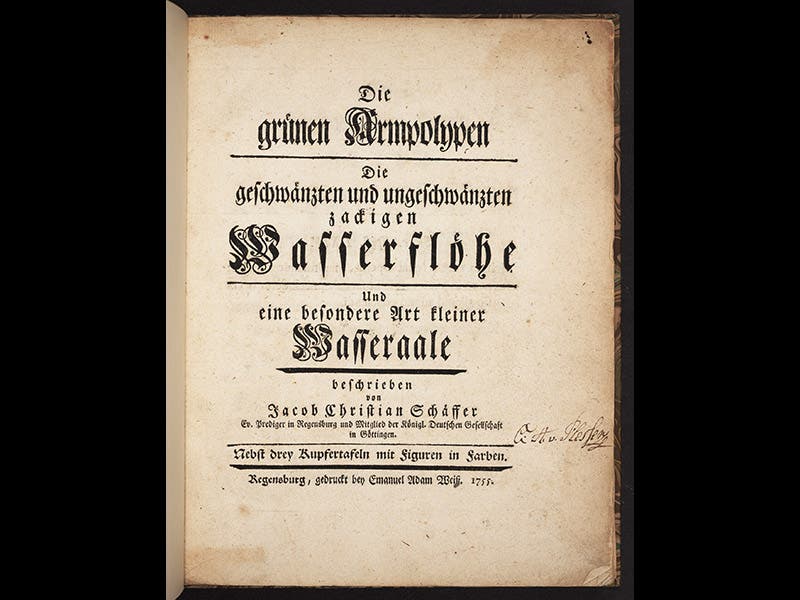Scientist of the Day - Jacob Christian Schaeffer
Jacob Christian Schaeffer, a German student of the very small, died Jan. 5, 1790, at the age of 71. Schaeffer is best known for his work in mycology (the study of fungi), but his most impressive publication was surely his book on Daphnia, or water-fleas, as they are often incorrectly but descriptively called. Daphnia are tiny crustaceans that are found in quiet fresh-water ponds the world over. Study of Daphnia could not begin until the microscope was invented and improved, so the first observer was the Dutch microscopist Jan Swammerdam, who published some images of Daphnia in 1669. There were several other observers in the next 80 years, but most of these could not even manage a correct external description of Daphnia, much less begin to unravel its internal anatomy and physiology. That is why Schaeffer’s work is so remarkable; in his book Die grünen Armpolypen (The Green Polyps, 1755), he managed to describe and illustrate his Wasserflöhe to such a minute degree that no one would come close to equaling his work for another century. His exquisite engravings of Daphnia (see first image above) revealed its heart, its curious single eye, the internal egg sac of the female, its gut, the filtering devices used to procure food, and the tiny protozoans that find Daphnia to be a generous host. Schaeffer’s book is so amazing that we chose to include it in our 2009 exhibition honoring Charles Darwin and his predecessors, The Grandeur of Life, where you can see details from the first image above.
The other images above show depictions of hydra and various microscopic worms, the title page of Die grünen Armpolypen, and a contemporary engraved portrait of Schaeffer.
Dr. William B. Ashworth, Jr., Consultant for the History of Science, Linda Hall Library and Associate Professor, Department of History, University of Missouri-Kansas City










